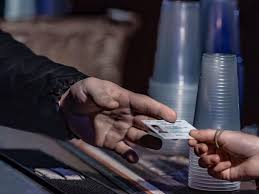
Here’s the article:
Understanding the Indicators of a False ID Ghost Image
In the world of digital identification and verification, the term "ghost image" refers to a secondary, faint, or blurred image that appears on an ID. This is often used as a security feature in legitimate identification documents. However, when it comes to false ID ghost images, detecting authenticity can be crucial in preventing fraud. So, which is an indicator of a false ID ghost image? Let’s dive into the key signs.
What is a False ID Ghost Image?
Before identifying the indicators of a false ID ghost image, it's essential to understand what this term means. In legitimate ID cards, the ghost image serves as an extra layer of security, typically placed beside or over the main photograph. In false or fraudulent IDs, however, ghost images often appear poorly done, lacking the precision and security features present in authentic documents.
Primary Indicators of a False ID Ghost Image
Blurry or Misaligned Image: A common indicator of a false ID ghost image is blurriness or distortion. In genuine IDs, the ghost image is usually sharp, well-positioned, and aligned correctly with the rest of the design. However, counterfeit ghost images can appear out of focus, poorly aligned, or not matching the primary photo.
Inconsistent Holographic Features: High-quality IDs often incorporate holograms or watermarks as security measures. If the ghost image does not align with or match the holographic features, it's a strong indicator of a fake ID.
Different Image Quality: On a legitimate ID, the ghost image should maintain the same level of quality as the primary photograph. If the ghost image looks grainy, pixelated, or of lower quality, it’s likely a false ID. This can happen due to low-resolution printing used in counterfeit operations.
Unnatural Color Tones: False IDs frequently show mismatched colors between the ghost image and the primary photograph. If the ghost image has a different hue or tone than the main picture, this could signal that the ID is fraudulent.
Secondary Indicators of a Fake ID Ghost Image
Outdated Fonts and Designs: A less obvious but still important indicator is the presence of outdated fonts, logos, or designs in the ghost image section. Government-issued IDs update their designs frequently, so any ID with older features can be a potential fraud.
Visible Pixelation: High-quality printing techniques used by governments ensure that ghost images are smooth and clear. However, counterfeit IDs often show pixelation in these images, revealing the low quality of the print.
Long-Tail Keywords Related to False ID Detection
To better understand the risks associated with fake IDs, it's essential to also consider related factors. For example, how to spot a fake ID ghost image or what makes an ID ghost image suspicious? These long-tail questions are frequently asked by individuals involved in ID verification, whether for entry to bars, purchasing age-restricted products, or security in sensitive environments.
Conclusion: Which is an Indicator of a False ID Ghost Image?
To summarize, indicators of a false ID ghost image include blurry or misaligned images, inconsistent holographic features, low image quality, and unnatural color tones. The presence of outdated fonts or visible pixelation can further indicate the likelihood of a fake.
By staying aware of these red flags, businesses, security personnel, and others involved in identity verification can help combat ID fraud. Always compare the ghost image against the primary photograph, holograms, and other security features to ensure the ID's authenticity.
